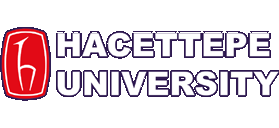ACADEMICS
Course Details
ELE608 - Numerical Methods in Electrical Engineering
2025-2026 Fall term information
The course is not open this term
ELE608 - Numerical Methods in Electrical Engineering
| Program | Theoretıcal hours | Practical hours | Local credit | ECTS credit |
| MS | 3 | 0 | 3 | 8 |
| Obligation | : | Elective |
| Prerequisite courses | : | - |
| Concurrent courses | : | - |
| Delivery modes | : | Face-to-Face |
| Learning and teaching strategies | : | Lecture, Question and Answer, Problem Solving |
| Course objective | : | It is aimed that the students who complete the course have an understanding of the techniques available for solving numerical computation problems that arise most often in electrical and electronics engineering. It is aimed that the students be aware of the relevant issues in selecting appropriate methods and software and use them wisely. |
| Learning outcomes | : | Recognize, classify and formulize numerical methods Understand the main error concepts at the input and output and can relate them Interpret the results of the numerical techniques that they use Decide which algorithm to use when encountered with a numerical problem Know the advantages and disadvantages of the numerical algorithm they use, and have a realistic estimation of how the algorithm will operate |
| Course content | : | Approximations and error in numerical methods, Systems of linear equations, Linear least squares, Eigenvalue problems, Nonlinear equations, Optimization, Interpolation, Numerical integration and differentiation, Differential equations, Random number generation. |
| References | : | Heath, Scientific Computing, 2002 |
| Weeks | Topics |
|---|---|
| 1 | Numerical error, sensitivity, floating point arithmetics |
| 2 | Systems of linear equations |
| 3 | Linear least squares |
| 4 | Eigenvalue problems |
| 5 | Computing eigenvalues and eigenvectors |
| 6 | Nonlinear equations |
| 7 | Optimization problems, one-dimensional optimization |
| 8 | Multi-dimensional optimization |
| 9 | Interpolation |
| 10 | Numerical integration and differentiation |
| 11 | Differential equations, initial value problems |
| 12 | Differential equations, boundary value problems |
| 13 | Partial differential equations |
| 14 | Random number generation |
| 15 | Final exam |
| 16 | Final exam |
| Course activities | Number | Percentage |
|---|---|---|
| Attendance | 0 | 0 |
| Laboratory | 0 | 0 |
| Application | 0 | 0 |
| Field activities | 0 | 0 |
| Specific practical training | 0 | 0 |
| Assignments | 14 | 50 |
| Presentation | 0 | 0 |
| Project | 0 | 0 |
| Seminar | 0 | 0 |
| Quiz | 0 | 0 |
| Midterms | 0 | 0 |
| Final exam | 1 | 50 |
| Total | 100 | |
| Percentage of semester activities contributing grade success | 50 | |
| Percentage of final exam contributing grade success | 50 | |
| Total | 100 | |
| Course activities | Number | Duration (hours) | Total workload |
|---|---|---|---|
| Course Duration | 14 | 3 | 42 |
| Laboratory | 0 | 0 | 0 |
| Application | 0 | 0 | 0 |
| Specific practical training | 0 | 0 | 0 |
| Field activities | 0 | 0 | 0 |
| Study Hours Out of Class (Preliminary work, reinforcement, etc.) | 14 | 3 | 42 |
| Presentation / Seminar Preparation | 0 | 0 | 0 |
| Project | 0 | 0 | 0 |
| Homework assignment | 14 | 7 | 98 |
| Quiz | 0 | 0 | 0 |
| Midterms (Study duration) | 0 | 0 | 0 |
| Final Exam (Study duration) | 1 | 25 | 25 |
| Total workload | 43 | 38 | 207 |
| Key learning outcomes | Contribution level | |||||
|---|---|---|---|---|---|---|
| 1 | 2 | 3 | 4 | 5 | ||
| 1. | Has general and detailed knowledge in certain areas of Electrical and Electronics Engineering in addition to the required fundamental knowledge. | |||||
| 2. | Solves complex engineering problems which require high level of analysis and synthesis skills using theoretical and experimental knowledge in mathematics, sciences and Electrical and Electronics Engineering. | |||||
| 3. | Follows and interprets scientific literature and uses them efficiently for the solution of engineering problems. | |||||
| 4. | Designs and runs research projects, analyzes and interprets the results. | |||||
| 5. | Designs, plans, and manages high level research projects; leads multidiciplinary projects. | |||||
| 6. | Produces novel solutions for problems. | |||||
| 7. | Can analyze and interpret complex or missing data and use this skill in multidiciplinary projects. | |||||
| 8. | Follows technological developments, improves him/herself , easily adapts to new conditions. | |||||
| 9. | Is aware of ethical, social and environmental impacts of his/her work. | |||||
| 10. | Can present his/her ideas and works in written and oral form effectively; uses English effectively. | |||||
1: Lowest, 2: Low, 3: Average, 4: High, 5: Highest
